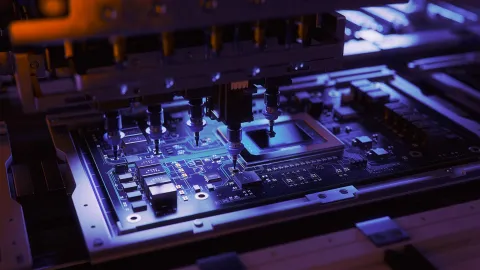Now is the time to transform: The elephants in the room

In the rapidly evolving landscape of financial services, the phrase “adapt or die” has never been more pertinent. For banks still trapped with legacy core banking solutions, the time to transform is now.
Legacy core banking systems, often decades old, have been the backbone of many financial institutions. These systems were designed in an era when frictionless, context-aware, digital banking was a distant dream, and customer expectations were vastly different. As needs changed, rather than replacing their core systems many banks adopted an additive-approach, where they deployed new systems to cater for new requirements. For a time, this patch-based strategy was sufficient. However, as the pace of change accelerated the result is that today these outdated systems are increasingly becoming a liability rather than an asset.
Why now?
1. Operational efficiency: Legacy systems are inefficient due to outdated technology and manual processes, causing slower processing times and higher costs. With AI and machine learning enabling real-time data processing, it's more important than ever before that banks modernize to stay competitive. Research shows that modernizing can boost productivity by up to 30%.
2. Regulatory pressure: New regulations arrive on an almost daily basis and become more stringent, with a greater emphasis on transparency, openness, 24/7 availability, and compliance. Legacy systems often struggle to meet these evolving standards, putting banks at risk of non-compliance. Additionally, the rise of digital currencies and blockchain technology is prompting regulators to update frameworks, making compliance more complex and urgent.
3. Costs: Maintaining legacy systems is costly consumes 70% of IT budgets, according to Celent. The pressures caused by economic slowdown and higher funding costs further strain banks' resources, making it crucial to invest in scalable, cost-effective technologies.
4. Competitive threats: Customers have more choice than ever before. Fintech startups and digital-only banks are leveraging cutting-edge technology to offer innovative products and services without being limited by legacy infrastructure. Blockchain and AI integration is reshaping banking, further reinforcing the need for traditional banks to change now. With digital banking accelerating and embedded finance rising, traditional banks must navigate these new dynamics to stay relevant. Last year, neobanks were projected to reach 394 million users.
The risks of doing nothing
Sticking with the status quo is no longer a viable strategy. Running a bank on legacy systems is not just a merely problematic, it has risen to the level of an existential threat.
Slow go to markets
With legacy solutions, launching a new product or service typically requires a much longer duration. It can take many months. Not only will this dull the competitive edge and ensure that banks cannot gain first mover advantages in the market, but it may mean that they can’t even be ‘fast followers’.
Innovation stagnation
Innovation is the lifeblood of the modern banking industry. Legacy systems, with their rigid architectures, stifle innovation. Banks that fail to innovate risk losing relevance in a market that is constantly evolving. Additionally, legacy systems can complicate compliance with evolving regulatory requirements.
The shrinking talent pool
The people with the experience and expertise needed to operate legacy platforms are becoming costlier and harder to find. With a shrinking pool of available resources, banks introduce greater operational and reputational risk associated with maintaining the status quo.
To rip and replace or to gradually modernize?
The path to transformation is filled with debate with many different approaches. There are two primary schools of thought that focus on the “rip and replace” approach and the “gradual modernization” strategy.
Rip and replace
Proponents of the “rip and replace” approach argue that the only way to truly modernize is to completely overhaul the existing system. This method promises a clean slate, free from the constraints of outdated technology. However, it comes with significant risks and costs. The process is complex, time-consuming, and can lead to substantial disruptions in service.
Gradual modernization
On the other hand, the gradual modernization approach advocates for incremental migrations away from the existing system. This method is less disruptive and allows banks to spread the costs over time. However, it can also lead to a patchwork of old and new technologies, potentially creating new inefficiencies and integration challenges during the interim period of co-existence.
Ultimately the right approach depends on the particular and unique circumstances of each bank. Let us not forget that transformation is not only about technology. It is also about People and Process. The impact of these approaches has on people and process needs to be factored into the decision taken.
The elephants in the room
Historically speaking, a core banking transformation is an activity that most bankers have only done once in a lifetime. Understandably, this led to a bit of nervousness and hesitation to go through with it. It generated a bewildering array of easy-to-ask and difficult-to-answer questions. But the coalesce into three major groups – let’s call the elephants in the room. Elephant 1. What happens to the customizations? Elephant 2. What about integrations? Elephant 3. Where does data go? Regardless of what form they take, these three elephants are always there and need to be addressed in one way or another.
To dive deeper into the challenges and opportunities discussed here, from legacy system limitations to regulatory pressures and cultural resistance. Watch our on-demand webinar, “Banking transformation: The elephants in the room” here. Hear directly from industry experts as they unpack the hidden hurdles of core banking transformation and share actionable strategies to move forward with confidence.
Customizations
During a core banking transformation, existing customizations often need to be re-evaluated. The new system may offer built-in functionalities that replace some custom solutions, but others might need to be redeveloped or adapted to fit the new platform. Some of the customizations may no longer be relevant, as they had been created to address requirements that are no longer there. This process involves a detailed analysis of current customizations, determining which are essential to be done, and planning their migration or redevelopment. Everyone knows that you should always strive to ‘change the bank’ rather than ‘change the system’, after all the system has been chosen because it has best practices built in. However, like most things in life, it is easier said than done. It requires real sponsorship and commitment at the leadership level to avoid replicating your legacy processes in the new technology.
Integrations
Integration with other systems is another concern. A core banking system sits at the heart of a bank and typically interacts with numerous external applications such as payment gateways, card management solutions, and digital channels. During the transformation, these integrations must be carefully mapped and tested to ensure seamless data flow and functionality. This often involves using middleware or APIs to bridge any gaps between the old and new systems. A thorough testing phase is essential to identify and resolve any issues before going live, minimizing the risk of operational disruptions.
Data migration
Data migration is perhaps the most critical and complex aspect of a core banking transformation. It involves transferring vast amounts of sensitive data from the old system to the new one. This process must ensure data integrity, accuracy, and security. Typically, it includes data cleansing, mapping, and validation stages to ensure that all data is correctly formatted and transferred. Given the sensitive nature of banking data, robust encryption and compliance with regulatory standards are paramount. A well-planned data migration strategy, often executed in phases, helps mitigate risks and ensures a smooth transition.
In an era of analytics and artificial intelligence, it is important to ensure that the data available is accurate and unified. Years and years of different employees entering data in different ways via different systems, often without validation, leads to many discrepancies and errors. Data cleansing is a great opportunity for banks to make sure they transition to a new system with reliable, usable, actionable data.
The case for immediate action
Clearly inaction is no longer an option. The costs and risks of doing nothing are simply too high. Banks must weigh the benefits of each approach and choose a path that aligns with their strategic goals and resources.
Strategic partnerships
One way to mitigate the risks involved in transformation is through strategic partnerships. Collaborating with fintech companies and technology providers can provide banks with the expertise and resources needed to navigate the complexities of modernization. Put simply, leveraging experts who execute transformations for a living, frees banks up to concentrate on the business of banking.
Embracing cloud technology
Cloud technology offers a viable solution for banks looking to modernize. It provides scalability, flexibility, and cost-efficiency, allowing banks to innovate and respond to market demands more effectively. As the regulatory environment evolves more jurisdictions are increasingly accepting cloud-first approaches. Even if regulators are not yet ready, choosing solutions that are cloud-ready is a massive step in the right direction.
Fostering a culture of innovation
Ultimately, the success of any transformation initiative hinges on the bank’s ability to foster a culture of innovation. This means encouraging experimentation, embracing new ideas, and being willing to take calculated risks.
Conclusion
The pressure to transform has never been greater. The time to transform is now. Banks with legacy core banking solutions must act decisively to stay competitive in a rapidly changing landscape. While the path to modernization is fraught with challenges and controversy, the risks of inaction far outweigh the potential pitfalls of transformation. By embracing change, leveraging strategic partnerships, and fostering a culture of innovation, banks can position themselves for long-term success in the digital age. And the good news is that the capabilities exist in the market to help banks address the elephants in the room, safely, securely and rapidly.



